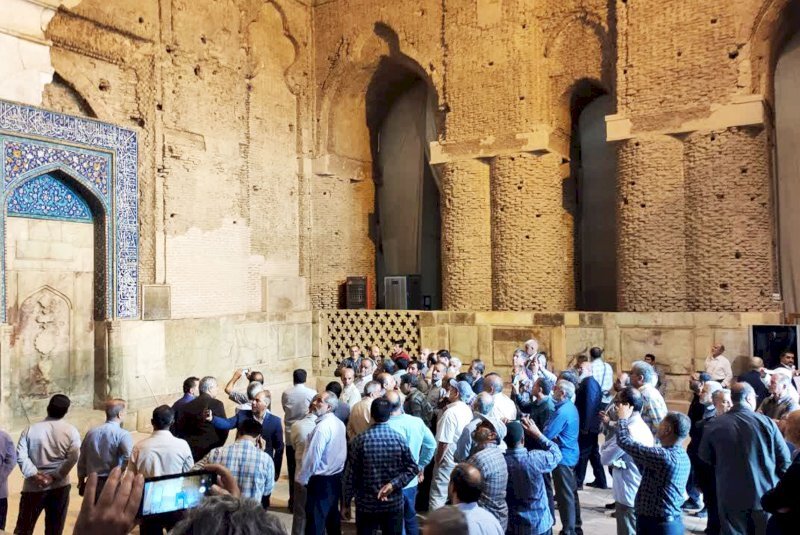Special Isfahan tour arranged for war veterans

TEHRAN – A guided tour has taken a group of war veterans to several historical sites in the touristic city of Isfahan, which suffered from air attacks during the 1980-88 Iran-Iraq war.
A highlight of the tour was paying visits to the restored parts of the Jameh Mosque of Isfahan hit by Iraqi bombs in the 1980s, CHTN reported on Thursday.
Over 150 war veterans toured the UNESCO-registered mosque in the tour organized to commemorate the National Cultural Heritage Week, the report said.
A busy place of worship, Jameh Mosque of Isfahan is a top destination for sightseers, history buffs, and researchers. Some say it is a veritable museum of Islamic architecture.
A visit reveals the best that nine centuries of artistic and religious endeavor have produced, from the geometric elegance of the Seljuks to the more lavish refinements of the Safavid era.
Religious worship on this site, which is also known as the Atiq Mosque or the Friday Mosque of Isfahan, is believed to date back to the Sassanid era. The sizeable mosque is believed to be constructed by the Seljuks in the 11th century over a Zoroastrian temple foundation.
The two large domes on the north and south have survived intact from the Seljuk epoch, but the rest of the mosque was destroyed by fire in the 12th century and rebuilt in the early 12th century. Many other embellishments were added throughout the centuries.
Surrounded by four contrasting iwans, the center of the main courtyard has an ablutions fountain meant to mimic the Kaaba in Mecca. Aspiring pilgrims once used the well to practice the relevant rituals before going on a hajj pilgrimage.
The giant porticos are very ornate with stalactite decorations from the Mongol era, kufic inscriptions customary for the Seljuks, and austere brick pillars.
Moreover, the mosque has an exquisite stucco mihrab with eye-catching Quranic inscriptions and floral motifs. Next to it is the Timurid-era winter hall lit by alabaster skylights.
Teeming with finely carved pillars, delicate mosaics, and perfect stonework, this place of worship covers an area of more than 20,000 square meters and is one of the largest mosques in Iran.
Isfahan was once a crossroads of international trade and diplomacy in the Safavid era, and now it is one of Iran’s top tourist destinations for good reasons. The ancient city has long been nicknamed as Nesf-e-Jahan, which is translated into “half the world”; meaning seeing it is relevant to see half the world.
AFM
